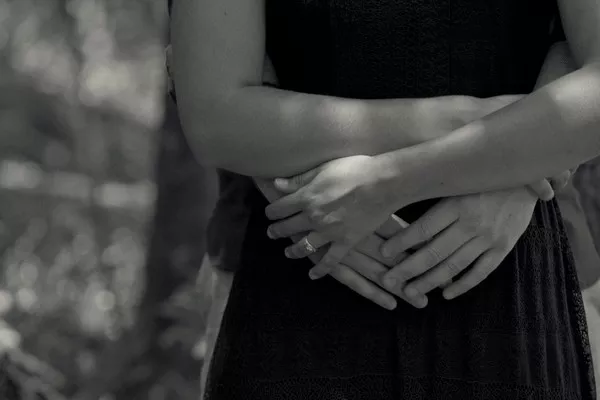The True Colors Personality Test is a psychological assessment tool designed to help individuals better understand their personalities, communication styles, and preferences. It was developed in 1978 by Don Lowry, who sought to simplify the complexity of psychological theories, such as Carl Jung’s personality theory and the Myers-Briggs Type Indicator (MBTI), into an easy-to-understand format. The True Colors test is based on four personality types, each represented by a color—blue, orange, green, and gold. By assigning individuals to one of these color categories, the test provides insights into their strengths, weaknesses, and interpersonal dynamics.
As a psychologist, I view the True Colors Personality Test as a useful tool in helping individuals gain self-awareness and enhance their relationships. While it may not have the same scientific rigor as some other psychological assessments, its simplicity and accessibility make it a popular choice in educational, organizational, and therapeutic settings. In this article, we will explore the history, framework, and applications of the True Colors Personality Test, as well as its strengths and limitations from a psychological perspective.
The History and Development of the True Colors Personality Test
The True Colors Personality Test was developed as a way to make psychological insights more accessible to the general public. Don Lowry, a former teacher and counselor, recognized that many personality assessments were too complex for everyday use. Inspired by the work of David Keirsey, who developed the Keirsey Temperament Sorter based on Jungian personality theory, Lowry sought to simplify the personality categories even further.
Lowry’s goal was to create a tool that could be easily understood by people of all ages and educational backgrounds. By using color as a metaphor for different personality types, he aimed to make the test both memorable and engaging. Since its development, the True Colors test has been widely adopted in various settings, including schools, workplaces, and personal development programs.
The Four Colors of the True Colors Personality Test
The True Colors Personality Test classifies individuals into one of four primary color types: blue, orange, green, and gold. Each color represents a set of traits, behaviors, and values that align with different personality styles. It’s important to note that, while individuals are typically assigned a dominant color, most people exhibit traits from all four colors to varying degrees. Understanding these color categories can provide valuable insights into how people interact with the world and those around them.
Blue: The Empathetic Idealist
People who score high in the blue category are often described as warm, compassionate, and empathetic. They are driven by their emotions and are highly attuned to the feelings of others. Blues place a strong emphasis on harmony, relationships, and personal connections. They often seek meaning and purpose in their lives and are motivated by a desire to help others.
Strengths: Blues excel in building relationships, resolving conflicts, and creating emotionally supportive environments. They are intuitive, empathetic, and skilled at understanding others’ emotions.
Challenges: Blues may struggle with setting boundaries or making objective decisions when emotions are involved. Their focus on harmony can sometimes lead to conflict avoidance, making it difficult to address issues directly.
Career Preferences: Blues often thrive in helping professions, such as counseling, teaching, nursing, or social work, where they can support and nurture others.
Orange: The Energetic Adventurer
Individuals with a dominant orange personality type are energetic, spontaneous, and action-oriented. They thrive in dynamic environments where they can use their skills to solve problems quickly and creatively. Oranges are risk-takers and are often drawn to activities that provide excitement and variety. They value freedom and prefer to live in the moment rather than plan for the future.
Strengths: Oranges are adaptable, resourceful, and quick thinkers. They are excellent in high-pressure situations and excel in roles that require immediate action and flexibility. They are often charismatic and able to motivate others.
Challenges: Oranges may struggle with long-term planning and can become easily bored with routine tasks. They may have difficulty following through on commitments or adhering to rules that they see as restrictive.
Career Preferences: Oranges are well-suited for careers that offer excitement and hands-on experiences, such as entrepreneurship, sales, emergency services, or athletics.
Green: The Analytical Thinker
Green personality types are analytical, logical, and independent. They are driven by a need to understand the world around them and often approach problems with a rational, methodical mindset. Greens value knowledge, competence, and intellectual exploration. They are natural problem-solvers who enjoy delving into complex systems and ideas.
Strengths: Greens are highly intelligent, strategic, and innovative. They are capable of breaking down complicated problems and coming up with effective solutions. Their focus on logic makes them excellent in roles that require critical thinking and analysis.
Challenges: Greens may struggle with interpersonal communication, as they tend to prioritize logic over emotions. Their focus on facts and data can make them appear detached or insensitive in social situations. They may also become frustrated with inefficiency or irrationality in others.
Career Preferences: Greens excel in careers that require deep thinking and problem-solving, such as engineering, research, technology, or science.
Gold: The Organized Planner
Individuals with a dominant gold personality type are responsible, organized, and detail-oriented. They thrive in structured environments and value stability, tradition, and reliability. Golds are motivated by a strong sense of duty and are often seen as dependable, loyal, and hardworking. They take pride in their ability to plan, organize, and manage tasks efficiently.
Strengths: Golds are highly dependable and excel in roles that require organization, attention to detail, and consistency. They are excellent at setting goals, creating schedules, and ensuring that tasks are completed on time. Their sense of responsibility makes them strong leaders and team players.
Challenges: Golds may struggle with flexibility and may become stressed when things don’t go according to plan. Their preference for structure can make it difficult for them to adapt to spontaneous or unpredictable situations.
Career Preferences: Golds are well-suited for careers in management, administration, finance, or law enforcement, where they can apply their organizational skills and sense of responsibility.
See Also: What is the Big 5 Personality Test for Employers?
Applications of the True Colors Personality Test
The True Colors Personality Test is used in a variety of settings, including education, business, and personal development. While it is not a clinical assessment tool, it provides valuable insights that can enhance self-awareness and improve communication in different contexts.
Educational Settings
In schools, the True Colors test is often used to help students understand their learning styles and develop effective study habits. By identifying whether a student is more of a blue, orange, green, or gold personality, teachers can tailor their teaching methods to suit the individual’s strengths. For example, a student with a dominant blue personality might benefit from group work and discussions, while a green student might prefer independent research projects.
The test can also promote better relationships among students, helping them understand and appreciate the different perspectives of their peers. This can foster a more inclusive and supportive classroom environment.
Workplace Settings
In organizational settings, the True Colors test is commonly used in team-building exercises and leadership development programs. Understanding the different personality types within a team can improve communication, collaboration, and productivity. Managers can use the test to assign roles and responsibilities that align with each team member’s strengths.
For example, a gold personality might excel in a project management role, while an orange personality might thrive in a fast-paced, client-facing position. By recognizing and valuing the diversity of personality types, organizations can create more harmonious and effective teams.
Personal Development
On a personal level, the True Colors test can be a valuable tool for self-reflection and growth. Individuals can use the test to gain insights into their own personality, communication style, and behavioral patterns. This self-awareness can help individuals make more informed decisions about their careers, relationships, and personal goals.
For example, someone with a dominant green personality might realize that they need to prioritize intellectual stimulation in their work to stay engaged, while a blue personality might recognize the importance of nurturing close relationships in their personal life.
Strengths of the True Colors Personality Test
One of the key strengths of the True Colors test is its simplicity. The use of color as a metaphor for personality types makes the test accessible and easy to understand for individuals of all ages. Unlike more complex personality assessments, such as the MBTI, the True Colors test can be completed quickly, making it a popular choice in group settings.
Additionally, the test’s focus on strengths and positive attributes makes it a useful tool for promoting self-esteem and personal growth. By highlighting the unique strengths of each color type, the True Colors test encourages individuals to embrace their natural abilities and appreciate the diversity of others.
Limitations of the True Colors Personality Test
Despite its popularity, the True Colors Personality Test has several limitations from a psychological perspective. One major limitation is its lack of scientific validation. Unlike standardized psychological assessments, such as the Big Five Personality Traits or the MBTI, the True Colors test has not undergone extensive empirical research to support its reliability and validity.
Additionally, the test’s simplicity can sometimes lead to oversimplification. Human personalities are complex, and while the four color categories provide a helpful framework, they may not capture the full range of individual differences. As a result, the test may not be as accurate or nuanced as more comprehensive personality assessments.
Another limitation is the potential for stereotyping. Assigning individuals to a single color category can reinforce rigid ideas about personality, leading to the assumption that people will always behave in certain ways based on their color type. It’s important to remember that personality is fluid, and most individuals exhibit traits from multiple categories.
Conclusion
The True Colors Personality Test is a popular and accessible tool that helps individuals gain insights into their personalities and interpersonal dynamics. By categorizing people into four color types—blue, orange, green, and gold—the test provides a framework for understanding different communication styles, motivations, and preferences. While it has several strengths, including its simplicity and positive focus, it also has limitations, particularly in terms of scientific validation and the potential for oversimplification.
As a psychologist, I believe the True Colors test can be a valuable starting point for self-reflection and personal growth. However, it should be used in conjunction with other tools and methods to gain a more comprehensive understanding of personality. Ultimately, the True Colors test reminds us that each person brings unique strengths to the table, and by appreciating these differences, we can foster more meaningful and productive relationships in both personal and professional settings.
Related topics:





























